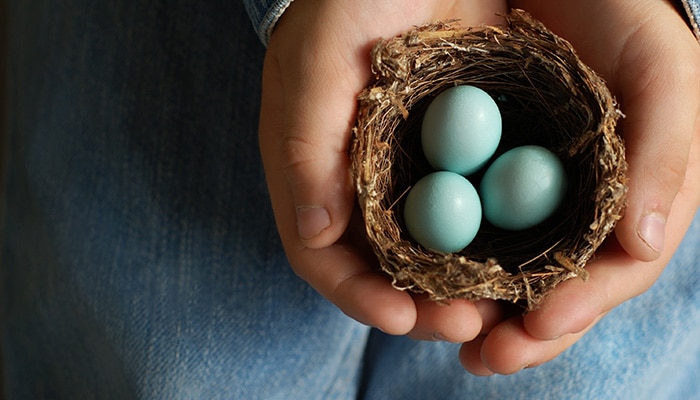While we believe that the books and resources recommended may be of value to you, keep in mind that these are suggestions only and you must do your own due diligence to determine whether the materials are appropriate and suitable for your use. PNC has no sponsorship or endorsement agreement with the authors or publishers of the materials listed.
ANIMAL FRIENDS

Animals That Hatch
Children will learn about animals that hatch from eggs.

Lesson Objective
The children will investigate eggshells and learn about animals that hatch from eggs.
Science
What You'll Need
- Real eggs or eggshells (or pictures of them)
- Pictures of baby animals that hatch from eggs (birds, turtles, fish, frogs, snakes)
- Plastic eggs – 1 per child (see Lesson Tips)
- Small plastic toy animals that will “hatch” from the eggs (turtles, birds, snakes, fish, frogs) – 1 per child (see Lesson Tips)
What To Do
Note: Prior to the lesson, place 1 toy animal inside each plastic egg.
- Display and discuss the real eggs, eggshells, or pictures (see Guiding Student Inquiry).
- Tell the children that they will be investigating eggshells and talking about animals that hatch from eggs.
- Ask the children what they think the egg’s job is.
- Display the pictures of the animals that hatch from eggs, and discuss the fact that not all eggs have hard shells. For instance, fish eggs and frog eggs are soft.
- Have the children try to guess the size of the egg from which each animal might hatch.
- Distribute the plastic eggs.
- Working with one child at a time, have the children open the plastic eggs and discuss the animals inside.
- Discuss where that animal might lay its eggs (see Did You Know?).
- Discuss what is different about where different types of animals lay eggs; for example, where a fish would lay an egg and where a goose might lay an egg.
Resources
Home School Resources
Home educators: use these printable lesson PDFs to teach this lesson to your home schoolers. They're available in English and Spanish.
Content Provided By
Common Core State Standards Initiative – These lessons are aligned with the Common Core State Standards ("CCSS"). The CCSS provide a consistent, clear understanding of the concepts and skills children are expected to learn and guide teachers to provide their students with opportunities to gain these important skills and foundational knowledge [1]. Visit the CCSS


